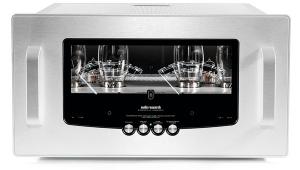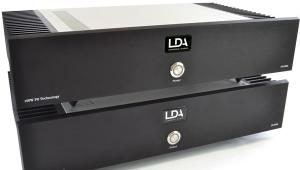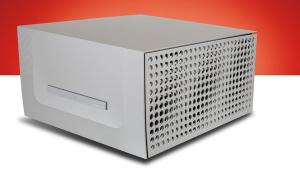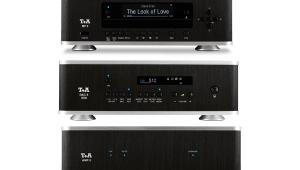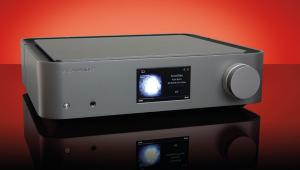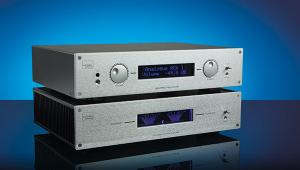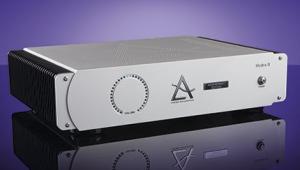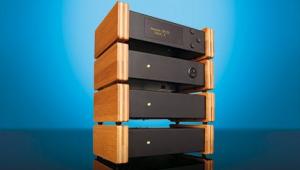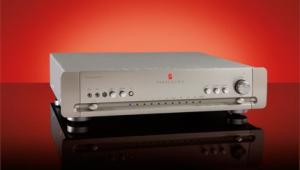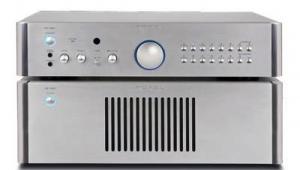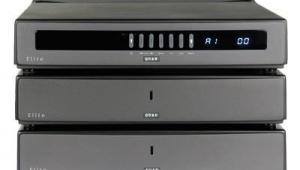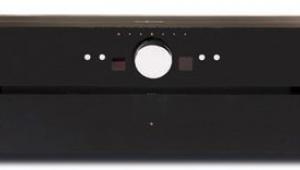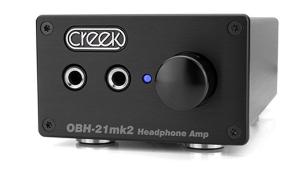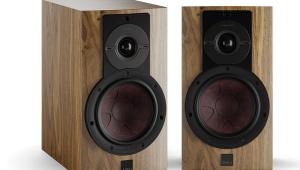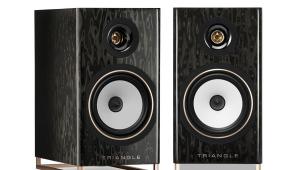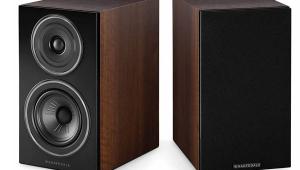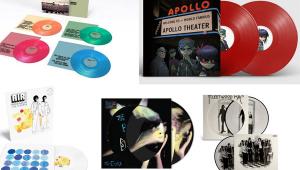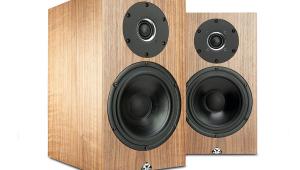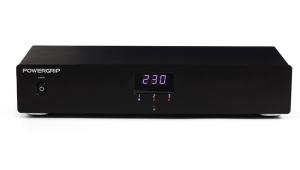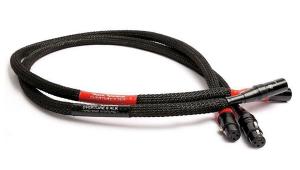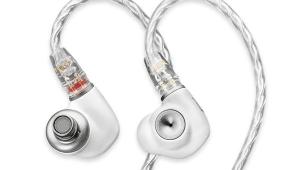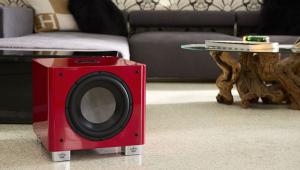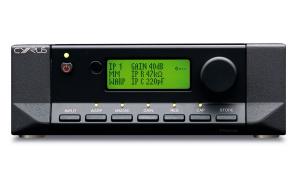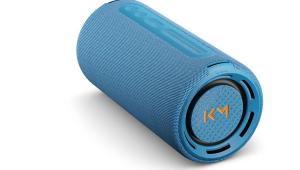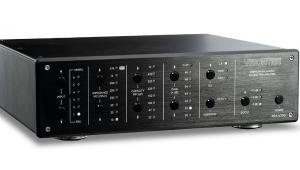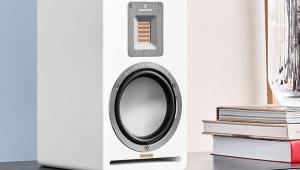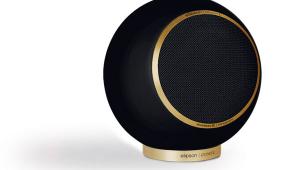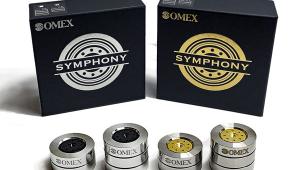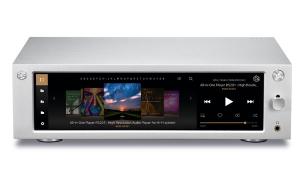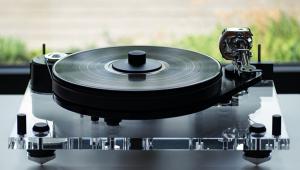Cayin SP-30S/SP-40M - £1,706/£1,640
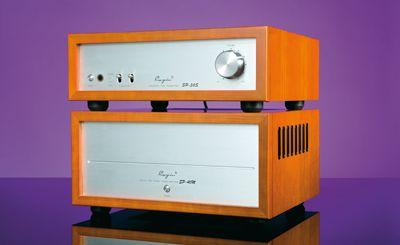
Cayin is the brand name of Zuhai Spark Electronic Equipment Co. – a Chinese company making good-value, high-end electronic products. The unashamedly retro- looking SP-30S and SP-40M tube pre/power amp is one of its tastier offerings, with the promise of excellent performance at a realistic price.
But, what should one expect from an amplifier like this? It used to be oh-so simple; tube amps sounded rich, warm and friendly, while solid-state types were lean, mean, and bitingly sharp. But can you still rely on the old stereotypical categorisations? Will the Cayin conform to type, or is it a wolf disguised in sheep’s clothing?
No humThe SP-30S is a nice simple preamp built around three tubes – 2x 12AU7 and 1x 12AX7. It offers three unbalanced line inputs plus a phono stage. There’s a fixed output for recording and two variable outputs. Facilities are minimal; just a volume knob and dual-lever input selector.
It’s encouraging to see a phono stage as part of the package – though this is for MM pickups only, with an input sensitivity of 3mV. If you want to use the SP-30S with a low-output MC pickup, you’ll need an MC step-up transformer or pre-preamplifier. Noise is pretty low (-68dB) and there’s no hum to speak of.
The SP-40M is a stereo power amp based around 4x KT-88 output tubes, producing 40 watts per channel with one per cent distortion at 1kHz. It has a single pair of inputs and a single set of loudspeaker outputs with transformer taps for four ohms and eight ohms. Additional tubes include 2x 12AU7s and 1x 12AX7.
The choice of different loudspeaker output taps is fairly common with transformer-coupled tube amps. It enables you to match the amplifier to your loudspeakers. The ‘correct’ impedance is the one that gives the loudest volume level. So, if the eight-ohm tap sounds louder than the four-ohm one, that’s what you should use – in theory.
However, even with eight-ohm speakers, it’s worth trying the four-ohm tap. You’ll lose a bit of power, but the sound may have a bit more control – a slightly firmer quality that makes voices and instruments seem better-focused. Used on the four-ohm setting, we noticed precisely this difference with the Impulse H1 horns used for this review.
Fairly beefyBoth pre and power amp are built on a steel chassis/case with a wooden sleeve surround. The preamp circuit features a single mother board, with normal printed circuit tracks. The power amp is hard-wired, which helps improve sound quality.
The brushed aluminium front panels are well-finished and the volume knob is made from solid aluminium giving a classy feel. The wooden case is around 175mm thick and has an attractive semi-gloss lacquer that reminds us of a Japanese Urushi finish.
Internal build quality is good, with minimum amounts of wiring and the use of high- quality components, including an Alps potentiometer. Admittedly, there’s nothing to make you gasp with amazement, but neither is there anything to cause disquiet or disappointment.
The transformers used seem fairly beefy – the SP-40M weighs in at a hefty 20kg – and decent transformers are the key to excellent performance with tube amps. The Cayin is basically a safe tried-and-trusted sort of design. There’s nothing fancy or clever about it – the company hasn’t attempted to reinvent the wheel here.
Both instruction books contain full schematic diagrams of the amplifier’s circuits – a nice ‘retro’ touch. Schematics were common in the 1950s and 1960s, when many of those buying hi-fi were electronics engineers who wanted to see what was under the bonnet. It also meant they could service the amplifier themselves, should something fail. For those into ‘retro’ looks and styling, Cayin also offers a matching CD player – the SP-CD300 costing around £1,450 – that goes with the SP-30S/SP-40M combination. Cayin also offers products with more modern styling at price points above and below those occupied by the items reviewed here.
More biteWe began by listening to the SP-30S preamp on its own – using it in place of our regular Musical Fidelity kW Pre tube/transistor hybrid. The MF combines valves with solid-state to (hopefully!) deliver the best of both worlds. The Cayin sounds smoother and a mite less bright than the MF, though it isn’t soft or unfocused.
While the MF has a bit more bite and attack, the smoothness of the Cayin is both beguiling and deceptive. It’s just as detailed and dynamic, albeit with a rounder, more relaxed quality. The musical presentation is wide-ranging and articulate, but not in a manner that draws attention to itself – a ‘classic’ tube sort of sound.
Some tube preamps produce a very rich euphonic tonality that creates an impression of ambience and space. Unfortunately, this sometimes results in a loss of focus and drive. Although the SP-30S is tonally smooth and open, it has a taut crisp immediacy that keeps the music on its toes – sounding direct and purposeful.
Having established the preamp’s sonic signature, we then connected the SP-40M power amp, substituting it for a Musical Fidelity kW tube/transistor power amp. The Cayin is less powerful than the MF (40 watts against 750 watts), but subjectively the all-tube design more than held its own at ‘normal’ volume levels.
The power amp delivers a similar quality of sound to the preamp. It offers comparable smoothness and integration, being slightly less sharp and immediate than the big MF, but nonetheless focused and articulate.
Natural and unexaggerated sums up the sound of the Cayin SP-30S and SP-40M. It’s not, perhaps, an immediately impressive amplifier – it doesn’t wow you with an arsenal of tricks and effects. It just gives you the music in a balanced and intelligible form. The more we listened to this amplifier, the more we liked it.
With the SP-30S/SP-40M, Cayin has created something that’s very inviting and comfortable to listen to. It’s precise, tidy and controlled, yet at the same time doesn’t sound bland or boring. It gives you the music cleanly, without adding false spices and colours of its own, while bringing out the natural timbres and tonal subtleties.
The presentation is detailed and informative, yet easy-on-the-ear and very unfatiguing. Being a tube amp, a certain amount of heat is produced – but not excessive amounts. The preamp barely gets warm at all, while the power amp runs surprisingly cool given the use of four KT-88s in a fairly confined space.
At 40 watts, power output is limited, but subjectively the SP-40M punches above its weight and sounds more powerful than its paper specifications might indicate. This is partly due to the bass, which is firm and solid; full and nicely voluminous. Tonally, there’s a smooth natural warmth that creates an impression of fullness and power.
Hot and sexyThe amps represent very good value and make an excellent choice for anyone seeking a good affordable tube amp that offers something special, without costing silly money. Of course, there are dearer, more glamorous alternatives to entice you. But don’t overlook what’s on offer here.
If certain other brands offer you the sonic equivalent of a seductive femme-fatale, this Cayin represents a loving faithful wife who provides companionship, comfort, support and also (when necessary) a bit of excitement, too! It’s an amplifier we could very happily live with. ‘Nuff said!
LIKE: Smooth clean sound quality – well-balanced and natural-sounding
DISLIKE: No MC phono stage (MM only)
WE SAY: Anyone wanting a tube amp offering high-end performance at a realistic price should arrange a demo now
DETAILS
PRODUCT: Cayin SP-30S and SP-40M
ORIGIN: China
TYPE: Preamp and power amp
WEIGHT: SP-30S 10kg; SP-40M 20kg
DIMENSIONS: SP-30S (WxHxD) 440x125x329mm SP-40M (WxHxD) 400x180x329MM
FEATURES:
• (Preamp) Inputs: CD, tuner, tape
• Outputs: pre-out, record
• Tubes: 2x12AU7, 1x 12AX7
• (Power amp) Inputs: 2x A/B, RCA
• Outputs: 4 and 8 ohm speaker
• Tubes: 4x KT88 EH, 1x 12AX7, 2x 12AU7
DISTRIBUTOR: Audio Sanctum
TELEPHONE: 07517 889 738
WEBSITE: audiosanctum.co.uk
 |
Inside this month's issue:
Q Acoustics 3020c standmount loudspeakers, Perlisten R10s active subwoofer, Quad 33 and 303 pre/power amps, Acoustic Solid Vintage Full Exclusive turntable, newcomer Fell Audio Fell Amp and Fell Disc and lots, lots more...
|
